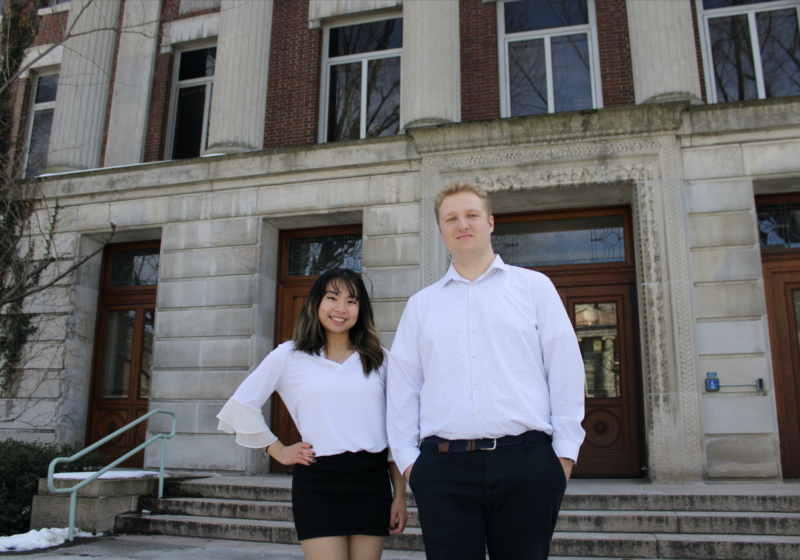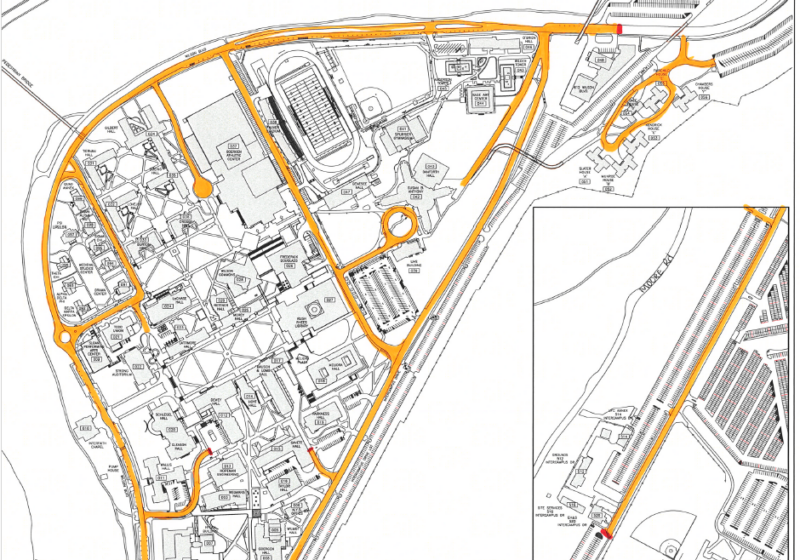University Provost Ralph Kuncl’s responsibilities could best be described as very broad, ranging from addressing diversity to enabling research funding to overseeing academic program certification. With the recent emergence of majors under the large umbrella of ‘Public Health,” the present minority representation in the faculty and the ever-changing field of research that the University harvests, the Campus Times took the opportunity to sit down with the provost to discuss what his office has recently been working on.
Going off the long list of what you do as provost, what would you say your priority is?
I would say if I added up all my time spent, [my priority is] the function of being the chief research officer. This is a research university after all. Research and technology transfer are primary to our mission. Discovery is meaningless until it is promulgated to the world.
You were the provost at Bryn Mawr before here, where you tripled their research grant funding. Since you’ve been here, we’ve become more competitive in obtaining grant funding. How do you achieve that kind of success?
I would say that I haven’t, nor has anyone, had a huge role to play yet in enormous increases in research support. If you look at the data over the last five years, our sponsored research is sort of flat, which is actually surprisingly good, because across that time, the National Institutes of Health and the National Science Foundation’s support was actually declining in real dollars, so our flat line is actually kind of a success. A recent success that I’ve been personally involved in is the creation of public-private alliances three-way alliances between private corporations, the University and the state of New York. One of those alliances is in a nascent state, but we hope will come to successful funding this year or next. It has helped support initially our center for research computing… [as a result] in one short year, the number of faculty using supercomputers in their research has quadrupled. And the number of computational hours has been more than 5 million in one year. What that infrastructure will do is leverage their ability to be competitive for grants in the coming months and years through the NIH and the NSF, and that’s really where the payoff is in leverage.
Are there other new majors on the horizon for the University besides the ‘Public Health” grouping bioethics; health, behavior and society; health policy; and epidemiology and ‘Engineering, Archaeology and Architecture” (which is still yet to be approved by the State of New York)?
The College’s strategic plan has other majors that will likely be in the pipeline once those parts of the plans get implemented. It seems possible that there might be some sort of a major in environmental sustainability someday. At the moment, it is a new cluster. It doesn’t seem to have the academic coherence or a large enough core to be thought of as a major yet, but I see that kind of thing down the line some years from now.
Does hiring fewer professors than in years past [as was the trend last academic year] slow the process of developing new majors?
Probably not [in ones already developed], because they are resourced primarily by faculty that are already here. For example, bioethics, health, behavior and society, health policy and epidemiology those are taught primarily by community and preventive medicine faculty in the School of Medicine and the departments of political science, economics and the biological sciences.
Does that stretch the faculty a little thin?
Well, sure, if you’re teaching one thing, you’re not teaching something else. So in some cases with individual faculty, it will mean you are teaching more and doing less research or less service.
I noticed in ‘Notes” (the Eastman-specific newsletter) an article about faculty diversity, and it mentioned that certain minorities (women, African Americans, Latinos, Pacific Islanders) are underrepresented in faculty. Is that University wide?
I think that’s fair to say. There are pockets where it’s not true, such as the school of Medicine and Dentistry… But I think the Eastman School of Music has been challenged, because of the dominance not of its own making of Western music by Europeans, predominantly male Europeans. So it takes a special effort by any school of music to create a jazz program that appeals to a range of students or an ethnomusicology program that appeals to those interested in world music.
The College, like the [Simon] School of Business, has been more challenged and it will take a lot of work to diversify its faculty further and its student body.
It’s a challenge also for the University to diversify its senior leadership. I’m a part of that. I’m acutely aware that the senior leadership of this University does not have many women, does not have many persons of color, and it will take a long time.
Our best advisers from the corporate world (we have 10 corporate leaders from around the world that have advised us on diversity)… the best things they tell us to do is to celebrate diversity when you make an achievement, measure what it is you are doing and its outcome and thirdly, and most importantly, recognize that this is a marathon. It has taken corporations decades to diversify and it’s a slow process. But we are making measurable progress, and I’m optimistic.
What are the specific things your office is doing to facilitate a discussion and action about this and other issues?
Last year, we held three Town Hall meetings. They were open discussions. We asked the question how have we done over the past four years and what should we be doing now…
The attendance of the one we held at Eastman School was fabulous &-&- basically the whole school came out. The one we held on the River Campus had half a dozen people &-&- same with the Medical Center…
So what we did next was conduct what we called the listening tour. [Three of our senior staff] interviewed over 100 faculty for an hour or more, and they just listened to what these people had to say about the prevailing conditions under which they worked, what they thought of our diversity work so far, what they suggested we focused on in the future.
And from that, we gleaned about 14 recommendations of activities that we ought to do now to improve the prevailing conditions under which faculty work, including such things as greater attention to mentoring, greater clarification about expectations for promotion, childcare and various other things. It’s in the review process now and will eventually be published and be what guides us in the coming few years.
Hilfinger is a member of the class of 2010.





